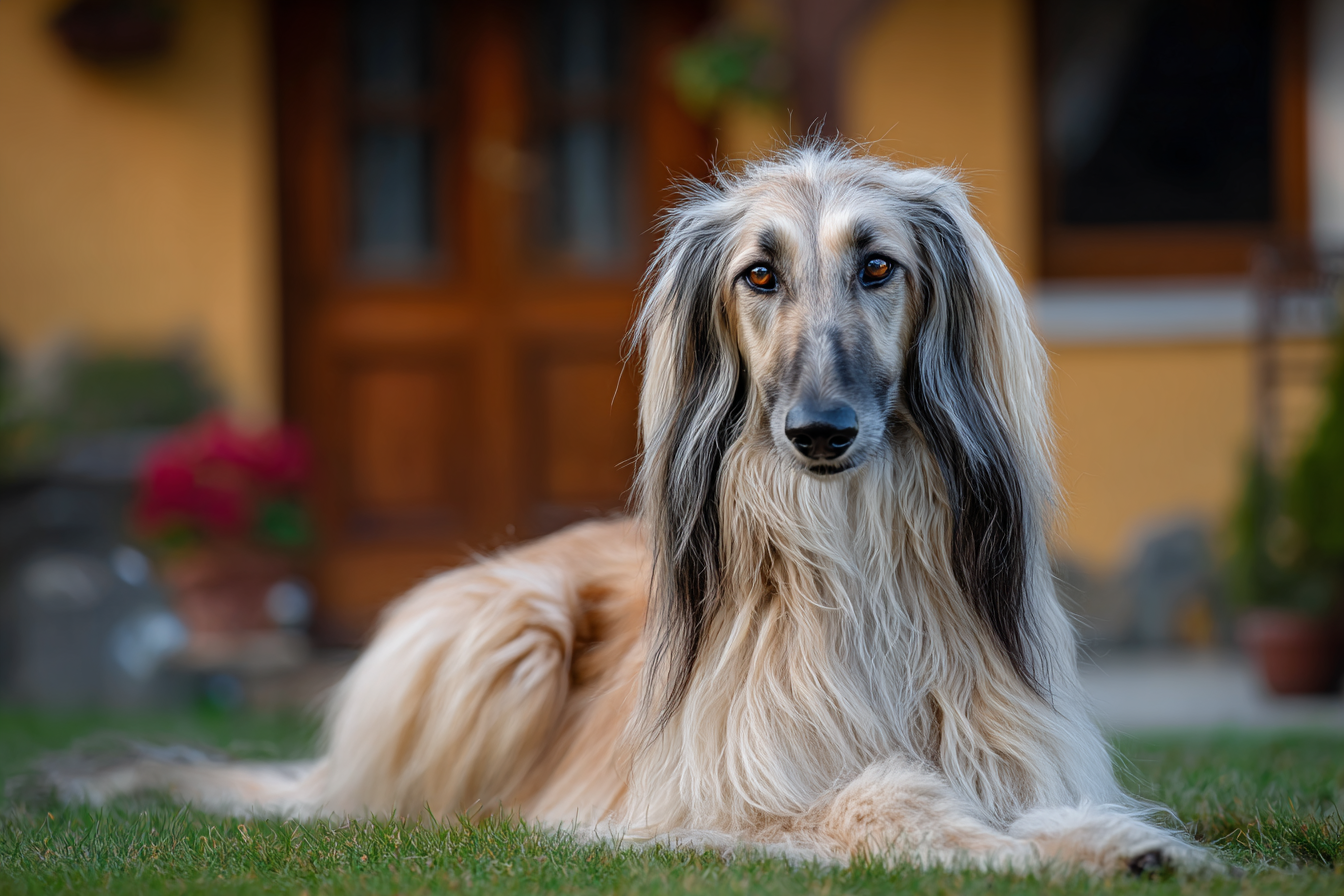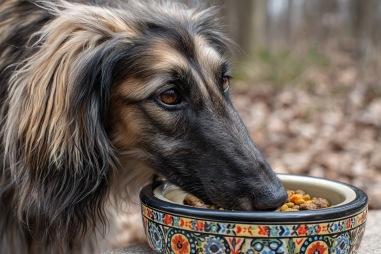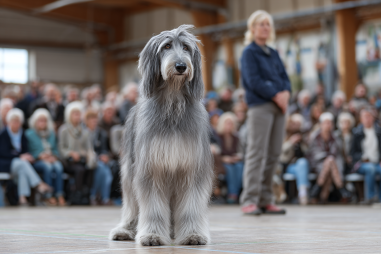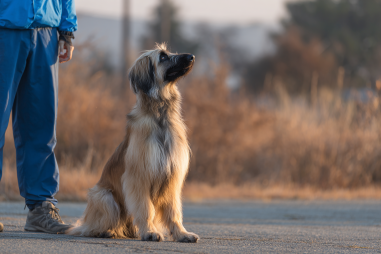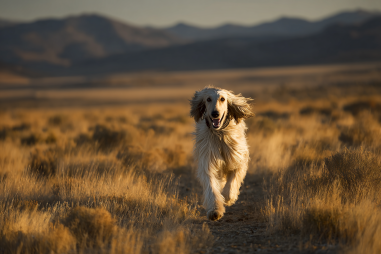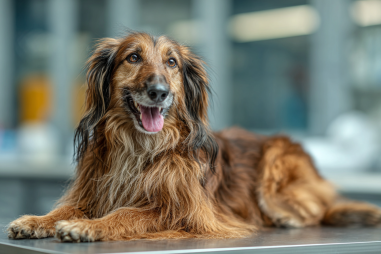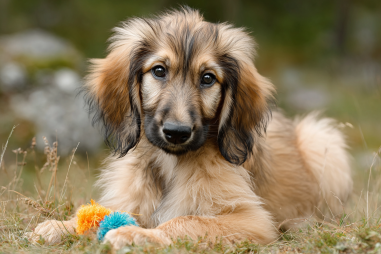Afghan Hounds are one of the most striking and elegant dog breeds, renowned for their flowing coats and dignified appearance. But beyond their beauty lies a distinct temperament that sets them apart from many other breeds. Understanding Afghan Hound temperament and behavior is key for anyone considering welcoming this sophisticated dog into their home. This article delves into their personality traits, social behavior, exercise needs, training challenges, and more, helping you know exactly what to expect with this unique and captivating companion.
Overview of Afghan Hound Personality Traits
Afghan Hounds have a personality that perfectly matches their regal appearance. They are often described as independent, aloof, and somewhat reserved, but this does not mean they lack affection or loyalty. These dogs are intelligent and curious but have a streak of stubbornness that can make them appear uninterested or indifferent at times. Unlike many breeds that thrive on constant attention, Afghan Hounds maintain a certain dignity and often prefer to observe their surroundings quietly rather than actively seek interaction.
Their personality often includes a whimsical sense of humor; they can be playful and mischievous, showcasing surprising bursts of energy. Yet, they typically balance this playfulness with calm and composed behavior, especially indoors. Afghan Hounds are known for being sensitive to their environments and the emotions of their owners, making them intuitive but emotional companions. Their temperament requires patience and an understanding that they don’t always conform to the typical “eager-to-please” dog stereotype.
Social Behavior with Family and Pets
Afghan Hounds form deep bonds with their human families, but they tend to express affection on their own terms. They are generally quiet and gentle around children, but they sometimes prefer older kids who can respect their space and not overwhelm their often dignified nature. Due to their reserved demeanor, Afghan Hounds might take a while to warm up to new family members or visitors, valuing calm introductions and gentle interaction.
When it comes to other pets, Afghan Hounds usually coexist well with dogs they are familiar with, especially when raised together. However, their strong prey drive—stemming from their history as hunting dogs—means they may not always get along with smaller animals such as cats, rabbits, or rodents. Early socialization is crucial to help Afghan Hounds learn appropriate behaviors around other animals, and supervision is recommended when introducing them to smaller pets.
Exercise and Activity Preferences
Despite their regal and sometimes aloof nature, Afghan Hounds are energetic dogs that require regular exercise to stay healthy and happy. They are natural runners, thanks to their history as sighthounds bred for chasing game across rugged terrain. Daily exercise should include opportunities for swift running in secure, fenced areas, alongside moderate walks and play sessions.
However, Afghan Hounds can be somewhat independent and may not always respond eagerly to off-leash commands, making secure areas particularly important. Apart from physical exercise, they enjoy mental stimulation as well. Activities like scent games, agility courses, or problem-solving toys can keep their sharp minds engaged. Overall, their exercise needs require a balance of structured physical activity and freedom to express their natural athleticism.
Training Responsiveness and Challenges
Training an Afghan Hound can be a rewarding yet challenging process, given their unique temperament. These dogs are intelligent but often independent to the point of being stubborn. Unlike breeds that seek to please their owners, Afghan Hounds tend to think for themselves, which can lead to a seeming lack of responsiveness during training sessions.
Positive reinforcement techniques work best, incorporating treats, praise, and patience. Consistency and gentle guidance will foster cooperation, but it’s important to avoid harsh discipline or repetitive training, which can lead to frustration or disengagement from the dog. Short, varied training sessions tend to be more effective, as Afghan Hounds have relatively short attention spans when it comes to obedience work.
Socialization is equally critical. Early exposure to different environments, people, and other dogs helps shape a well-rounded Afghan Hound. Without it, they may develop shyness or anxiety. Overall, training this breed requires understanding their unique mindset and tailoring the approach to their dignified, independent character.
Signs of Stress or Anxiety
Being sensitive dogs, Afghan Hounds can display stress or anxiety in subtle ways. Recognizing these signs is important to ensure their well-being. Common behaviors indicating discomfort include:
- Excessive pacing or restlessness
- Excessive licking or grooming
- Withdrawal or hiding away from family members
- Vocalizations such as whining or barking without clear cause
- Changes in appetite or sleep patterns
These signs may arise from separation anxiety, fear of loud noises, or unfamiliar experiences. Providing a safe and calm environment as well as predictable routines can help soothe anxious Afghan Hounds. When stress signs persist, consulting with a veterinarian or professional trainer experienced in sighthounds can provide tailored strategies to alleviate anxiety.
Suitable Living Environments
Afghan Hounds adapt best to living environments that cater to their need for space and moderate climate. Because of their long, luxurious coats, they can be sensitive to extreme heat and humidity, requiring careful temperature control to prevent overheating. Homes with secure, spacious yards are ideal, providing them with room to run and play safely.
While Afghan Hounds can live in apartments or smaller homes, owners must commit to providing sufficient daily exercise and mental stimulation outside the home. Indoors, these dogs appreciate a quiet and calm atmosphere that respects their dignified personality. They tend not to enjoy loud, chaotic households and prefer environments where calmness prevails, allowing them to relax and feel secure.
Tips to Handle Common Behavioral Issues
Afghan Hounds may exhibit certain behavioral challenges due to their independent nature and sensitivity. Here are some helpful tips to manage common issues:
- Stubbornness: Use patience and positive reinforcement rather than force or punishment. Making training fun and rewarding increases engagement.
- Prey drive: Always supervise them around smaller animals and keep them on-leash or in secure areas when outside to prevent chasing behavior.
- Separation anxiety: Gradually acclimate them to alone time with increasing durations and provide interactive toys or comfort objects.
- Excessive aloofness: Encourage socialization from an early age and reward any friendly or confident behaviors to build trust.
- Excessive grooming needs: Maintain regular brushing to prevent matting and enlist professional grooming for their unique coat care.
With understanding and consistency, Afghan Hounds can thrive, showing off their characteristic charm and elegance while fitting in harmoniously with their family’s lifestyle.
Embracing the Afghan Hound’s Character
The Afghan Hound’s temperament is a beautiful blend of aristocratic elegance and spirited independence. They are not the typical “easy-to-train” breed, nor are they always openly affectionate, but their distinct personality offers a unique companionship experience. Owners who embrace their hound’s quirks and respect their need for autonomy often find a deeply loyal and intriguing friend in them.
Understanding their temperament involves appreciating the subtle ways they communicate and moving beyond expectations shaped by other more eager-to-please breeds. When provided with the right balance of exercise, patience, socialization, and love, Afghan Hounds enrich their families’ lives with a touch of grace and a dash of playful whimsy. They may require special care and understanding, but the reward is an elegant companion who stands out in any crowd—both in appearance and in heart.

